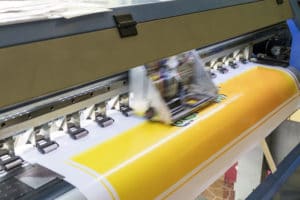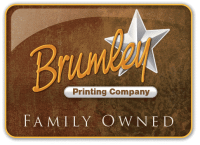 As new printing technologies have developed over the past few decades, printing on plastic has become an affordable and very attractive option for many businesses when printing banners, signs, door hangers, vehicle wraps, business cards, and a wide range of promotional products.
As new printing technologies have developed over the past few decades, printing on plastic has become an affordable and very attractive option for many businesses when printing banners, signs, door hangers, vehicle wraps, business cards, and a wide range of promotional products.
There are a variety of plastic materials, each with unique qualities that make them ideal for different applications. Some are resistant to UV light, some are more durable, others are brittle, and so forth. When selecting plastic for printing, it is critical that you understand these qualities.
Below, we summarize the features and characteristics, pros and cons of the six most common printable plastic materials to help you make an informed decision.
High Impact Polystyrenes (HIPs)
High Impact Polystyrene is a tough form of styrene with excellent fabrication and thermoforming characteristics. It’s cheap and fairly print-friendly, making it a worthwhile option for applications where durability and high-precision are not required. Beware though that it’s also extremely brittle, does not die-cut well, and is extremely sensitive to both heat and UV radiation.
Modified styrene
Most of the structural weakness of styrene can be mitigated by introducing modifiers to the material, resulting in a modified form of styrene comprising approximately 72% styrene and 28% modifiers, with greater rigidity and tear strength, as well as improved die cutting capabilities. When it comes to printing on plastic, the only downside to using modified styrene is that it can be more expensive and only come in shades of white.
High-Density Polyethylene (HDPE)
This is the type of plastic most bottle caps, jugs, piping, and plastic lumber is made from. It is priced similar to polystyrene but boasts superior quality and is, therefore, a little better suited for printing.
Polyvinyl Chloride (PVC)
One of the most widely used forms of printing plastics, PVC works extremely well in most applications. It’s especially strong and easy to die-cut. However, PVC is also the dirtiest form of plastic in the market today, is nearly impossible to recycle, and is rather expensive compared to other plastics.
Polypropylene (Polypropene)
A cheaper alternative to PVC, polypropylene is frequently used in stationary folders, restaurant menus, packaging, and storage boxes. It is rugged and resistant but liable to cracking and crazing when exposed to heat and UV radiation for extended periods. However, compared to PVC, it’s a lot cleaner, die-cuts extremely well, and is more environmentally friendly.
Polyester
Lastly, you can also opt for polyester (of course not the one used in fabrics). In addition to retaining most of the good qualities found in other plastics, polyester is very heat stable. It is also extremely strong, resistant to tear, and easy to die-cut. The only downside is that polyester used for printing can be very expensive.
Do you have more questions about printing on plastic? As one of the leading commercial printers in DFW, we offer a wide range of printing services. Call us at 817-336-5551 to learn more.
